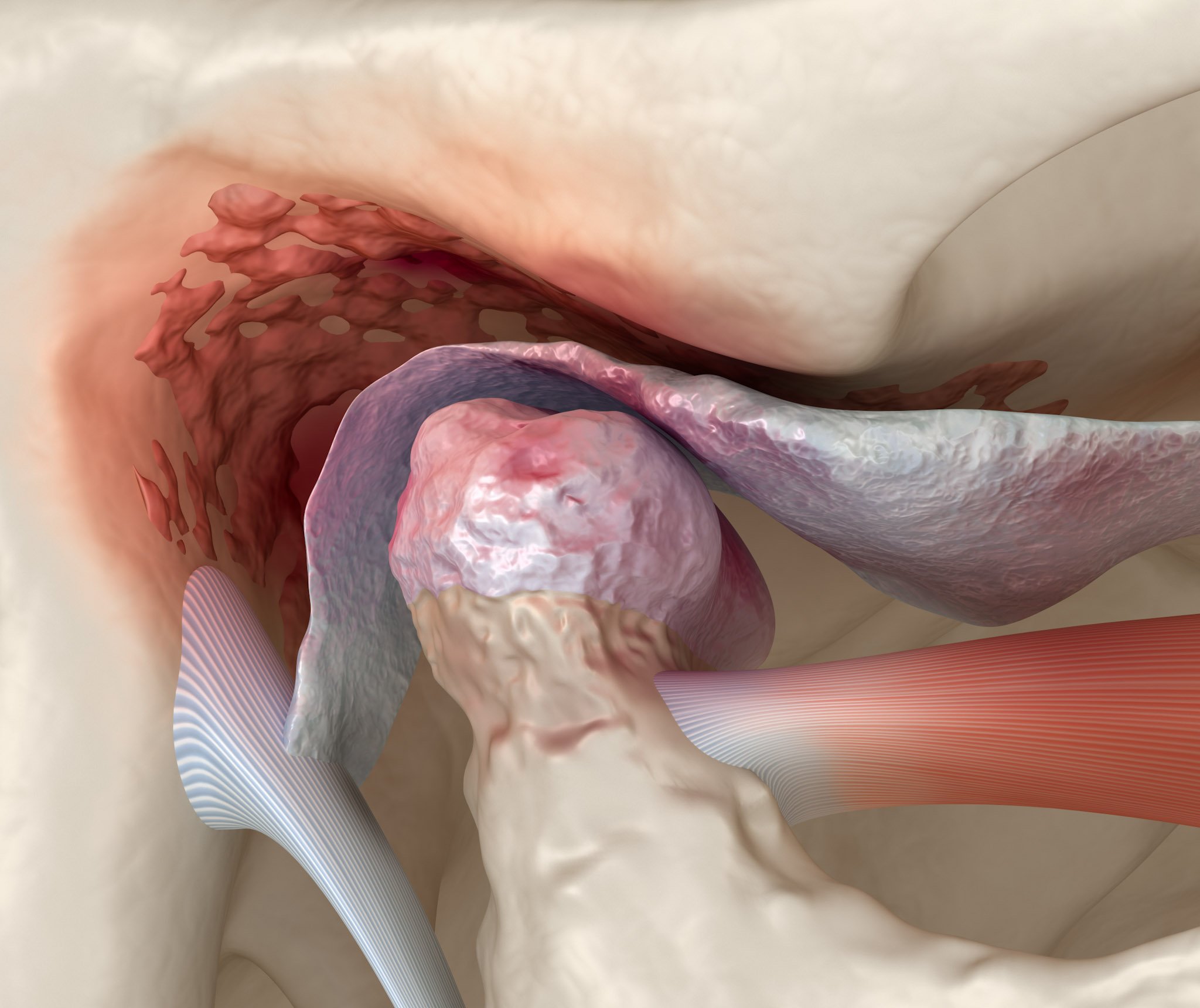TMJ Surgery
We know that no one wants surgery on their TMJ. Our philosophy is to reserve TMJ surgery as a last resort. That is, if you have a structural problem inside the joint that has failed to heal on its own with conservative therapy. We have seen many patients heal on their own, and so this is why we always prefer to give it a good faith try.
If you have failed conservative therapy, you may need one of several TMJ procedures. The specific procedure you need will depend on several factors, including your history of symptoms, your physical exam, and your MRI and CBCT scan findings. Every patient and every joint is unique, and these decisions are not straightforward.
One procedure that Dr. Rosenfeld performs is TMJ surgical arthroscopy. This procedure works very well for more mild cases of TMJ arthritis. This is a procedure in which a small scope (camera) is inserted into the joint. The port for this scope requires one or two small punctures through the skin right in front of the ear. This allows several things to be done. First, it provides the doctor with the opportunity to examine the inside of the joint, to see the anatomy up close to confirm the diagnosis. Second, it allows the doctor to perform a thorough lavage, or washing out of the joint, and to flush out all of the inflammatory mediators (chemical cell signals that cause pain) that are present in the joint fluid. Third, it provides a means for your surgeon to remove scar tissue bands that have formed that have created stiffness and pain, allowing you to move your joint freely again. This procedure is done under general anesthesia, but is fairly short, and you can go home the same day.
Another TMJ procedure that can be done is called an arthroplasty. “Arthro” refers to the joint, and “plasty” means changing the shape of. So this procedure involves changing the shape of the internal anatomy of the joint. This is usually reserved for when there has been more severe structural damage to the joint. This is an open surgery, as opposed to the arthroscopic procedure above, and requires a skin incision. This incision is made right in front of the ear, and is similar to a facelift incision. The joint is accessed through this incision, and several things can be done: First, the joint surfaces can be smoothed, to create easier joint movement. Second, the meniscus (disc) can be freed from its scar tissue and can be secured into a more favorable and physiologic position. Third, if your meniscus has a perforation in it, it can be repaired during this procedure. Sometimes a meniscus cannot be repaired, and in that case we use a local tissue flap to replace it. This incision is closed with absorbable stitches and heals very well.
The third and most invasive TMJ surgical procedure is total alloplastic TMJ replacement. This procedure is reserved for the most severe TMJ degenerative or arthritic disease, and is recommended when the joint is so broken down that less invasive procedures will likely not be enough. This surgery is performed in the hospital under general anesthesia. The incisions necessary are the incision mentioned above, the facelift incision, as well as an incision hidden in a neck crease near the angle of your jaw. The diseased TMJ is removed, and the entire ball and socket joint apparatus is replaced with a prosthetic. You can read about the individual joint components and the materials used here. One or both joints can be replaced, and this procedure can be done on its own or in conjunction with orthognathic, or corrective jaw surgery. Patients are generally very happy with the outcome, because the TMJ pain that existed before the surgery is mostly gone.
Every TMJ surgery mentioned here requires patient compliance with postoperative physical therapy in order to optimize success. This will be emphasized in every office visit.
In general, the treatment philosophy of TMJ disorders is highly controversial amongst doctors. You can see ten different doctors about your TMJ issue, and you will likely receive ten different recommendations, or close to it. This is why it is so important to research your doctor properly, have a good rapport with him or her, and ask all of your questions and make sure that you understand the answers.

